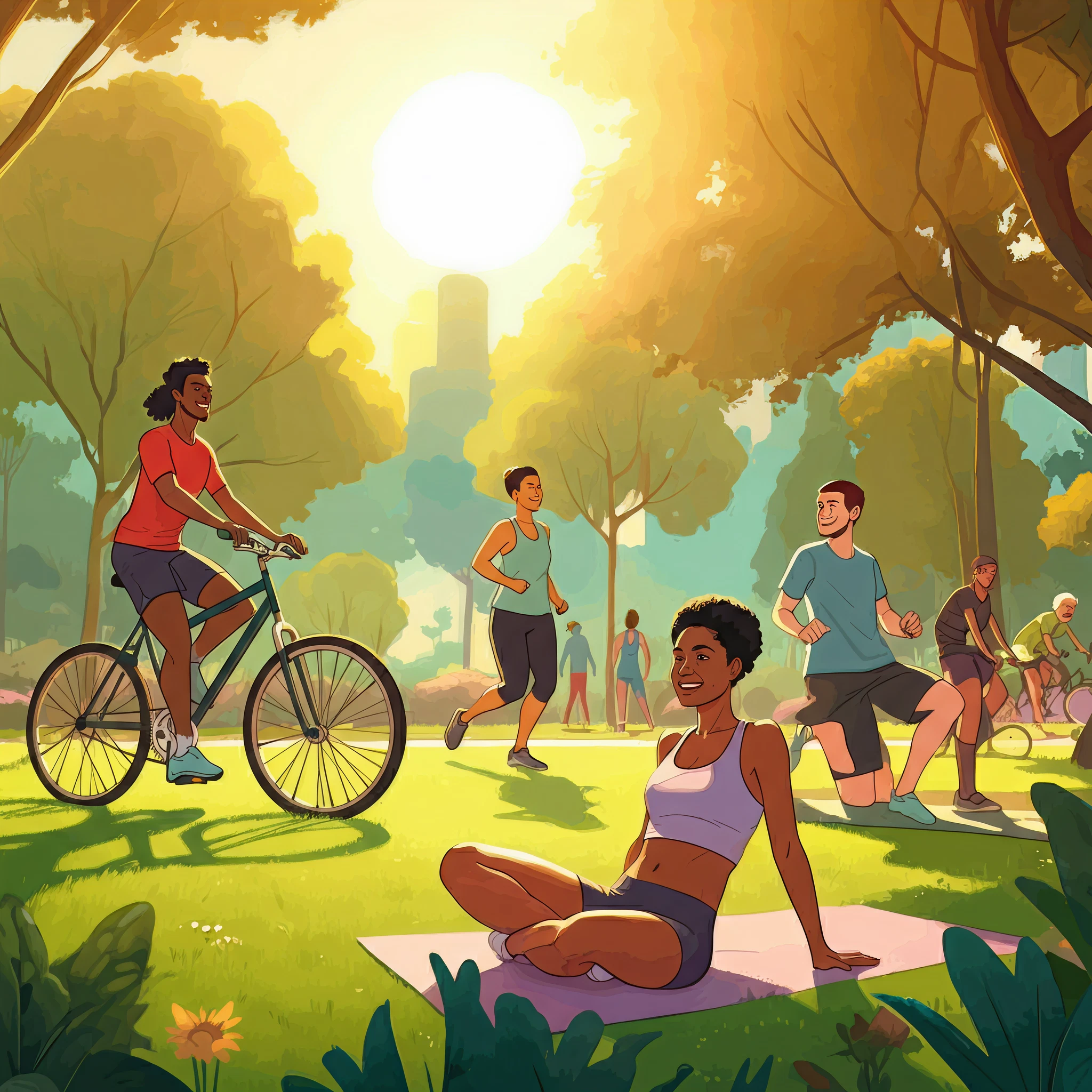When was the last time you truly engaged in recreation that energized your body or nourished your soul? Recreation and active leisure are essential for a fulfilling life, not just for individual well-being but for strengthening communities as a whole. The truth is, active recreation participation is everyone’s responsibility. By working together, fostering inclusivity, and encouraging participation, we can create a healthier, more connected, and happier society.
This article dives into what active recreation entails, why it matters so deeply, and how each of us can take steps to promote it within our communities.
Understanding Active Recreation
Active recreation refers to leisure activities that engage your body and mind in physical motion. From walking, hiking, and dancing to kayaking, cycling, and goalball, active recreation offers people the opportunity to feel alive while enjoying their free time. It differs from passive forms of recreation like watching TV or reading, as it directly contributes to improving physical fitness, flexibility, stamina, and mental health.
But active recreation isn’t reserved just for fitness enthusiasts. It’s for everyone regardless of age, ability, or physical condition. And this inclusivity makes it even more vital to ensure opportunities are available to all.
Why Active Recreation Matters
Active recreation has far-reaching benefits that ripple through a person’s life and their community. By engaging in active recreation, you can:
1. Improve Physical and Mental Health:
Regular physical activity enhances cardiovascular health, builds strength, reduces anxiety, improves sleep quality, and can even reduce the risk of chronic illnesses.
2. Strengthen Social Bonds:
Recreation is inherently a social activity. Whether it’s a family hike, a friendly game of volleyball, or a community dance class, it brings people together, encouraging friendships and strengthening bonds that reduce isolation.
3. Increase Quality of Life:
Active recreation provides moments of joy, boosts your energy, and helps relieve stress. Additionally, it fosters a sense of accomplishment, whether through learning new hobbies, meeting fitness goals, or simply enjoying nature.
4. Foster Inclusivity:
Participation in active recreation shouldn’t be limited by physical ability or circumstance. Through thoughtful planning, it’s possible to adapt activities so that everyone, including those with disabilities, can participate and thrive.
Active Recreation is a Collective Responsibility
The importance of active recreation extends beyond personal well-being. Its success relies on a joint effort, where everyone plays their part to create an inclusive and accessible environment. Here are the roles we can all take in making active recreation more accessible and engaging:
1. For Individuals
- Make deliberate choices to incorporate active recreation into your life.
- Join local walking groups, sports teams, or fitness classes.
- Be an advocate for inclusivity by welcoming people of different abilities to recreational activities.
- Invite friends, family, or coworkers to participate, spreading enthusiasm for healthy, active lifestyles.
2. For Community Leaders
- Create and maintain public spaces like parks, trails, and recreation centers that promote physical activity.
- Organize events that encourage diverse groups within the community to come together for sports, dance, or other active hobbies.
- Invest in accessible equipment or adaptable activities, ensuring these spaces are welcoming to people with varying physical or visual abilities.
3. For Health Advocates
- Share the health benefits of active recreation through campaigns, workshops, and community partnerships.
- Inspire collaboration between schools, businesses, and local governments to integrate more active programs into daily routines.
- Advocate for funding and resources to make recreation accessible to all, particularly underserved populations.
Examples of Inclusive Active Recreation
Inclusivity is a critical element of ensuring active recreation participation becomes everyone’s responsibility. Simple adaptations to standard activities can go a long way. Consider the following examples:
- Goalball for People with Visual Impairments
This team sport, specifically developed for people who are blind or with low vision, uses audible beeping balls and fosters exciting games open to everyone.
- Adapted Hiking Challenges
With tactile maps and supportive guides, hiking trails can become accessible to those with disabilities. This encourages shared outdoor adventures for all.
- Community Dance Classes
Inclusive dance sessions that account for varying mobility levels bring joy to people while catering to their physical needs.
By thinking creatively and being intentional, virtually any activity can be adapted to suit participants of all abilities and ages.
Make a Difference Today
Engaging in active recreation benefits individuals and the wider community, and it’s vital that we all contribute to its success. Take a moment to reflect on your role in fostering an active and inclusive culture:
- Are you prioritizing movement and joy in your life?
- Are you encouraging others to join you in recreational activities?
- Are you advancing inclusivity in your local community spaces?
Most importantly, remember that active recreation participation is everyone’s responsibility. Be an advocate, an organizer, and a role model. Start small, take deliberate steps, and watch how those ripples turn into waves.
Call to Action:
Are you ready to create a society that moves together? Reach out to your local recreation centers or community leaders to learn how you can get involved in promoting active and inclusive leisure activities. Together, we can make recreation more accessible and fun for all! Share your favorite active recreation moments using #ActiveTogetherOnline and inspire others to join the movement.








